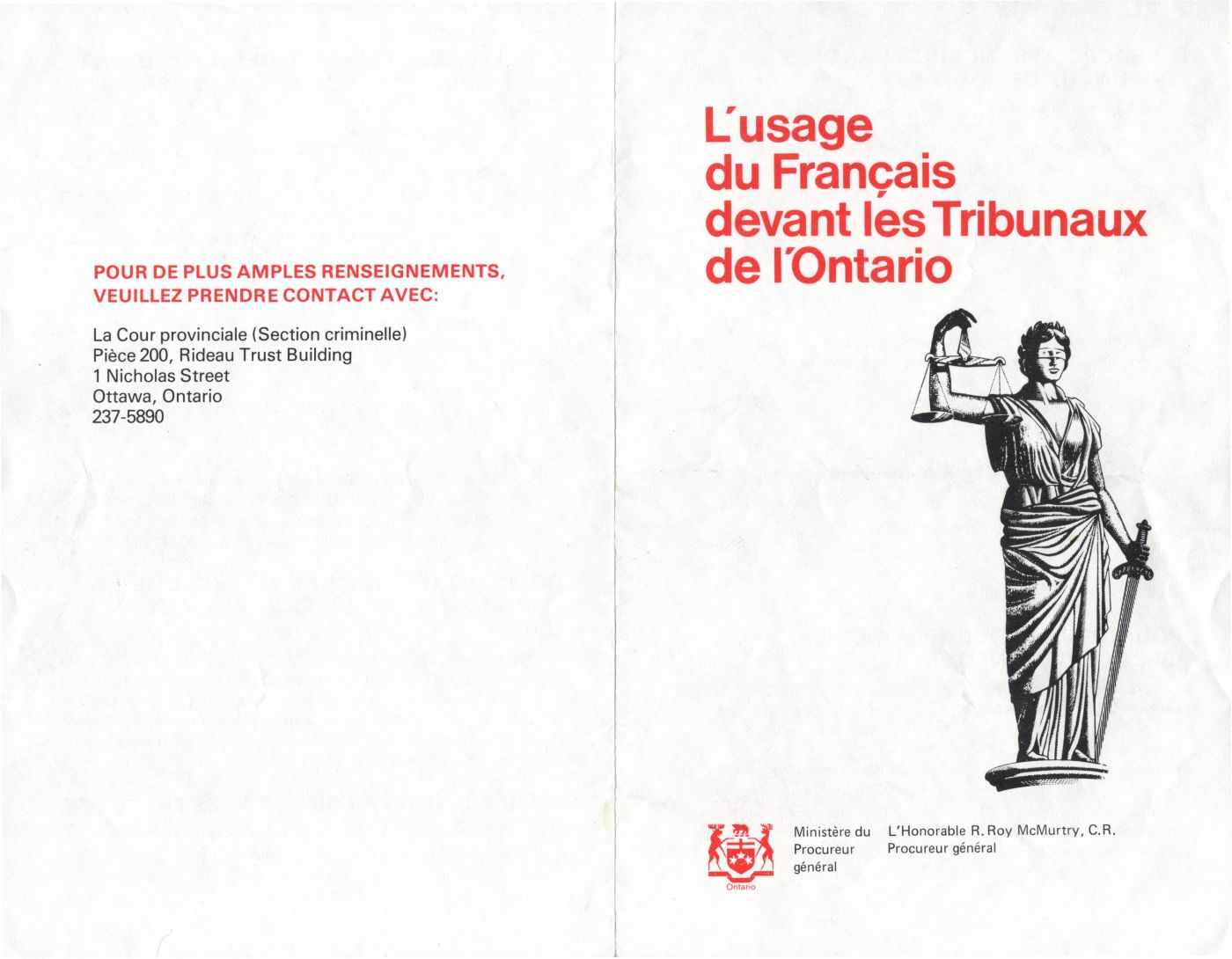Members of the C’est l’temps movement are bold. They denounce the situation of Francophones in Ontario without hesitation or reprieve, and they are proven right in most cases. Their rhetoric is radical, young, engaged and mobilizing. C’est l’temps actions have fundamental repercussions in the field of justice. They constitute, in fact, the first steps in a movement which leads to the 1984 adoption of judicial bilingualism in Ontario.
What happens next validates the movement.
1 – In December 1975, the Government of Ontario announces that forms will be available in French to apply for vehicle registration renewal.
2 – In June 1976, the Attorney General of Ontario, Roy McMurtry, creates a bilingual court pilot project in Sudbury.
3 – The movement calls for the Ministry of the Attorney General to create a position of Coordinator of Bilingual Services and to establish a French-language Judicial Advisory Council. The Davis government follows up on all these requests.
4 – In 1984, eight years after meeting with members of the C’est l’temps movement, Roy McMurtry passes the Courts of Justice Act. The law officially recognizes French and English as the language of the courts in Ontario.
5 – In May 1986, the Government of Ontario adopts the French Language Services Act. The Act states that “a person has the right [...] to communicate in French with, and to receive available services in French from, any head or central office of a government agency or institution of the Legislature…” 1
1 CRCCF, Mouvement c'est l'temps!, Virtual Exhibit.

